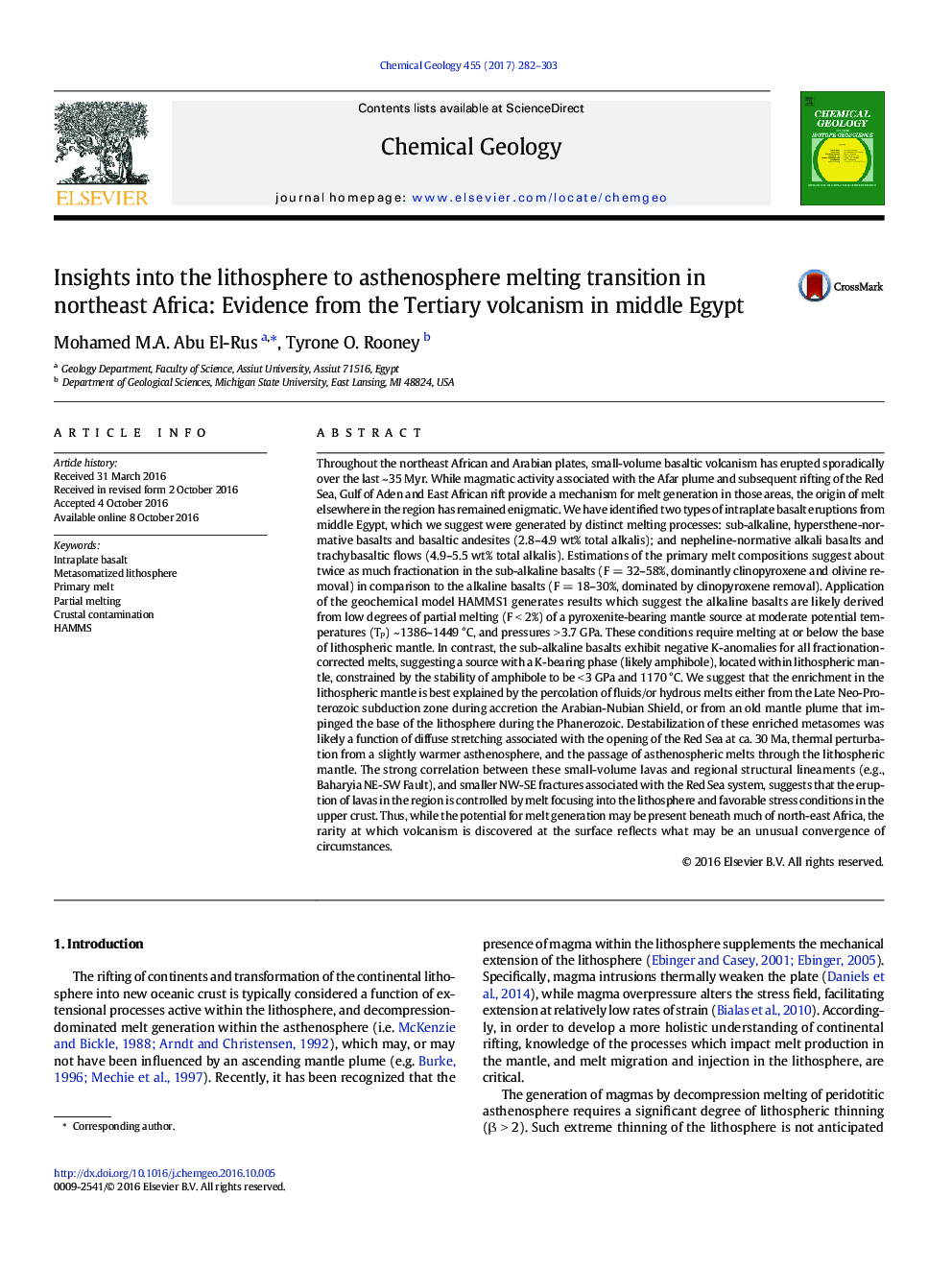| Article ID | Journal | Published Year | Pages | File Type |
|---|---|---|---|---|
| 5782742 | Chemical Geology | 2017 | 22 Pages |
•Alkaline and sub-alkaline intraplate basalts are recognized in the middle Egypt.•Eruption of these basalts indicates melting shift from lithosphere to asthenosphere during Tertiary.•Sub-alkaline basalts have generated from melting of an amphibole –bearing lherzolite source.•Alkaline basalts have derived from melting of a pyroxenite-bearing lherzolite source.
Throughout the northeast African and Arabian plates, small-volume basaltic volcanism has erupted sporadically over the last ~ 35 Myr. While magmatic activity associated with the Afar plume and subsequent rifting of the Red Sea, Gulf of Aden and East African rift provide a mechanism for melt generation in those areas, the origin of melt elsewhere in the region has remained enigmatic. We have identified two types of intraplate basalt eruptions from middle Egypt, which we suggest were generated by distinct melting processes: sub-alkaline, hypersthene-normative basalts and basaltic andesites (2.8–4.9 wt% total alkalis); and nepheline-normative alkali basalts and trachybasaltic flows (4.9–5.5 wt% total alkalis). Estimations of the primary melt compositions suggest about twice as much fractionation in the sub-alkaline basalts (F = 32–58%, dominantly clinopyroxene and olivine removal) in comparison to the alkaline basalts (F = 18–30%, dominated by clinopyroxene removal). Application of the geochemical model HAMMS1 generates results which suggest the alkaline basalts are likely derived from low degrees of partial melting (F < 2%) of a pyroxenite-bearing mantle source at moderate potential temperatures (TP) ~ 1386–1449 °C, and pressures > 3.7 GPa. These conditions require melting at or below the base of lithospheric mantle. In contrast, the sub-alkaline basalts exhibit negative K-anomalies for all fractionation-corrected melts, suggesting a source with a K-bearing phase (likely amphibole), located within lithospheric mantle, constrained by the stability of amphibole to be < 3 GPa and 1170 °C. We suggest that the enrichment in the lithospheric mantle is best explained by the percolation of fluids/or hydrous melts either from the Late Neo-Proterozoic subduction zone during accretion the Arabian-Nubian Shield, or from an old mantle plume that impinged the base of the lithosphere during the Phanerozoic. Destabilization of these enriched metasomes was likely a function of diffuse stretching associated with the opening of the Red Sea at ca. 30 Ma, thermal perturbation from a slightly warmer asthenosphere, and the passage of asthenospheric melts through the lithospheric mantle. The strong correlation between these small-volume lavas and regional structural lineaments (e.g., Baharyia NE-SW Fault), and smaller NW-SE fractures associated with the Red Sea system, suggests that the eruption of lavas in the region is controlled by melt focusing into the lithosphere and favorable stress conditions in the upper crust. Thus, while the potential for melt generation may be present beneath much of north-east Africa, the rarity at which volcanism is discovered at the surface reflects what may be an unusual convergence of circumstances.
